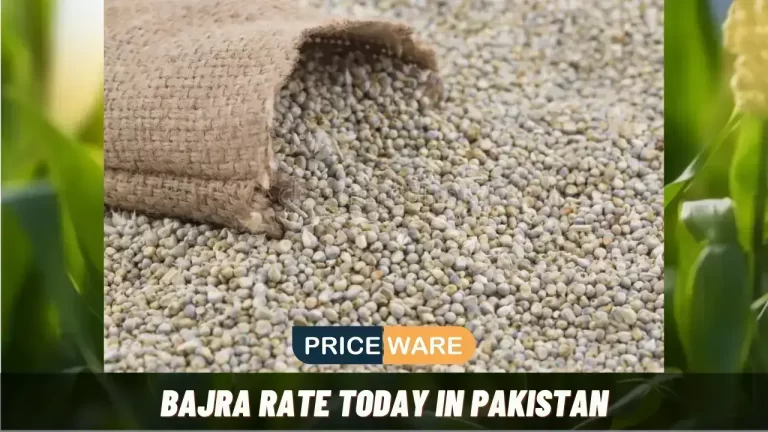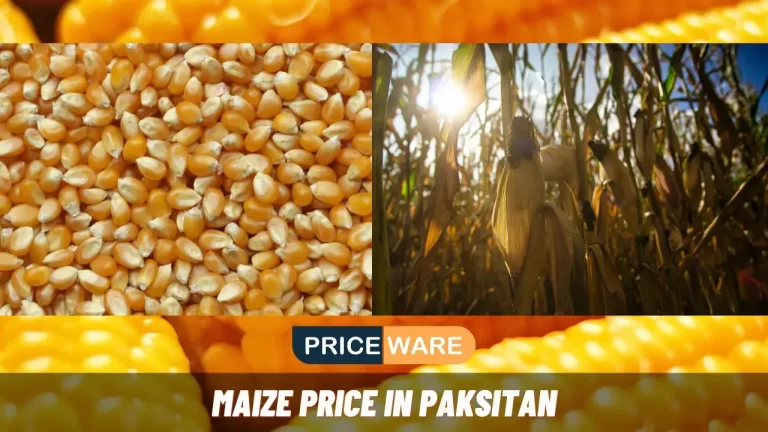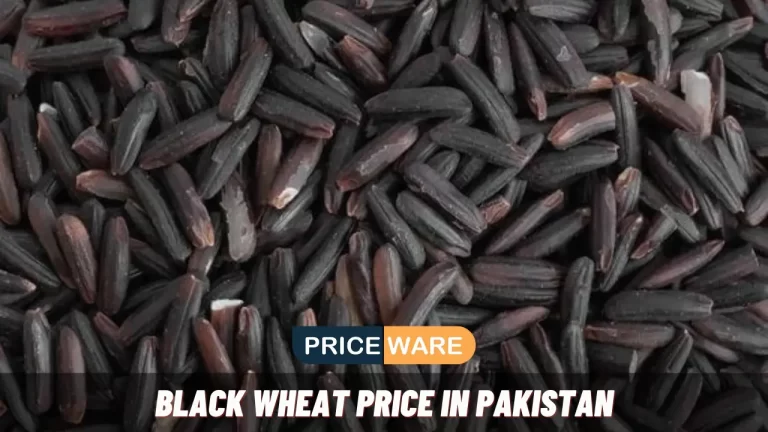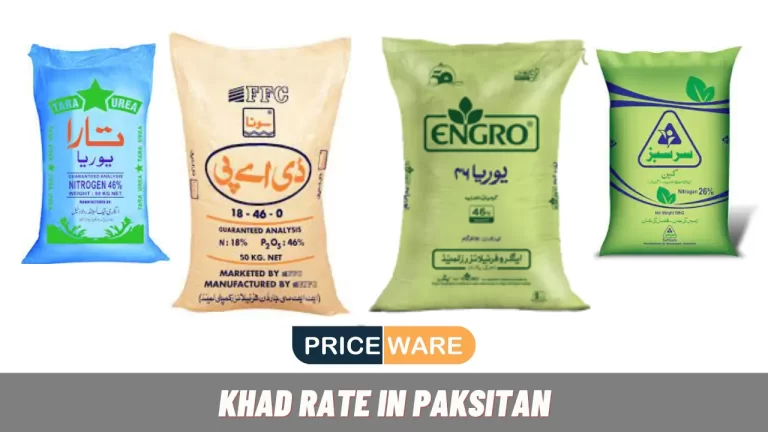Wheat Price in Pakistan Today | Gandum Rate 2024
What is the current wheat Price in Pakistan in 2024 and how are recent wheat prices impacting the agricultural landscape? These questions are of critical significance for farmers, consumers, and policymakers. Wheat plays an integral part in maintaining food security while providing livelihood support to millions. In this post, we will provide information on the current wheat prices, future outlooks, and government policies.

Current Wheat Rates in Pakistan
Wheat prices vary across provinces and regions in Pakistan. Punjab and Sindh provinces currently suggest minimum support prices (MSP) of Rs.4,000 per 40KG of wheat; however, market prices may differ significantly due to various factors like quality, demand, and supply dynamics; it’s wise to pay attention to market conditions and local sources to receive accurate real-time wheat pricing information.
Wheat Price in Punjab:
| District / City | New Wheat Minimum Rate | New Wheat Maximum Rate |
|---|---|---|
| ArifWala | 3,200 PKR | 3,550 PKR |
| Ali Pur | 3,400 PKR | 3,500 PKR |
| AhmadPur Sharqia | 3,250 PKR | 3,380 PKR |
| Bahawalnagar | 3,370 PKR | 3,450 PKR |
| Bahawalpur | 3,450 PKR | 3,600 PKR |
| Bhakkar | 3,400 PKR | 3,700 PKR |
| Burewala | 3,300 PKR | 3,520 PKR |
| Chichawatni | 3,350 PKR | 3,530 PKR |
| Chishtian | 3,300 PKR | 3,400 PKR |
| Chowk Azam | 3,350 PKR | 3,600 PKR |
| Chakwal | 3,350 PKR | 3,550 PKR |
| Chowk Munda | 3,380 PKR | 3,560 PKR |
| Dera Ghazi Khan | 3,300 PKR | 3,450 PKR |
| Dera Ismail Khan | 3,500 PKR | 3,700 PKR |
| Dunga Bunga | 3,450 PKR | 3,550 PKR |
| Faisalabad | 3,300 PKR | 3,600 PKR |
| Faqirwali | 3,300 PKR | 3,500 PKR |
| Fazil Pur | 3,500 PKR | 3,600 PKR |
| Fortabbas | 3,300 PKR | 3,400 PKR |
| Gujranwala | 3,600 PKR | 3,700 PKR |
| Haroonabad | 3,350 PKR | 3,450 PKR |
| Hasilpur | 3,200 PKR | 3,300 PKR |
| Islamabad | 3,420 PKR | 3,500 PKR |
| Kahror Pakka | 3,250 PKR | 3,450 PKR |
| Khanpur | 3,300 PKR | 3,430 PKR |
| khanewal | 3,500 PKR | 3,830 PKR |
| Layyah | 3,300 PKR | 3,430 PKR |
| Lahore | 3,600 PKR | 3,850 PKR |
| Lodhran | 3,500 PKR | 3,750 PKR |
| Maroot | 3,300 PKR | 3,630 PKR |
| Multan | 3,500 PKR | 3,800 PKR |
| Mianwali | 3,300 PKR | 3,700 PKR |
| Mian Channu | 3,450 PKR | 3,500 PKR |
| Minchanabad | 3,200 PKR | 3,350 PKR |
| Muzaffargarh | 3,500 PKR | 3,800 PKR |
| Okara | 3,300 PKR | 3,700 PKR |
| Pattoki | 3,500 PKR | 3,700 PKR |
| Pakpattan Sharif | 3,250 PKR | 3,350 PKR |
| Rahim Yar Khan | 3,400 PKR | 3,500 PKR |
| Rajanpur | 3,200 PKR | 3,350 PKR |
| Rawalpindi | 4,000 PKR | 4,100 PKR |
| Sadiqabad | 3,300 PKR | 3,450 PKR |
| Sahiwal | 3,400 PKR | 3,510 PKR |
| Sargodha | 3,600 PKR | 3,750 PKR |
| Sheikhupura | 3,500 PKR | 3,800 PKR |
| Toba Tek Singh | 3,300 PKR | 3,500 PKR |
| Vehari | 3,200 PKR | 3,450 PKR |
| Yazman Mandi | 3,300 PKR | 3,430 PKR |
Wheat Price in Sindh:
| District / City | Minimum Rate | Maximum Rate |
|---|---|---|
| Dadu | 3,320 PKR | 3,400 PKR |
| Hyderabad | 3,400 PKR | 3,500 PKR |
| Ghotki | 3,380 PKR | 3,440 PKR |
| Jhuddo | 3,450 PKR | 3,520 PKR |
| Karachi | 3,500 PKR | 3,600 PKR |
| Kunri | 3,350 PKR | 3,400 PKR |
| Larkana | 3,420 PKR | 3,520 PKR |
| Mehrabpur | 3,500 PKR | 3,630 PKR |
| Mirpur Khas | 3,520 PKR | 3,540 PKR |
| Nawab Shah | 3,400 PKR | 3,500 PKR |
| Sakrand | 3,520 PKR | 3,680 PKR |
| Sanghar | 3,560 PKR | 3,710 PKR |
| Shikarpur | 3,460 PKR | 3,520 PKR |
| ShahdadPur | 3,450 PKR | 3,500 PKR |
| Sukkur | 3,620 PKR | 3,700 PKR |
| Tando Allah Yar | 3,400 PKR | 3,450 PKR |
| Tando Muhammad Khan | 3,480 PKR | 3,500 PKR |
| Umarkot | 3,450 PKR | 3,500 PKR |
Gandum Rate in Khyber Pakhtunkhwa:
| District / City | Minimum Rate | Maximum Rate |
|---|---|---|
| Dera Ismail Khan | 3,500 PKR | 4,000 PKR |
| Mardan | 3,450 PKR | 4,000 PKR |
Wheat Rate in Balochistan:
| District / City | Minimum Rate | Maximum Rate |
|---|---|---|
| Sibi | 3,475 PKR | 3,580 PKR |
| Quetta | 3,675 PKR | 3,780 PKR |
Read Related Articles:
Factors Influencing Wheat Prices in Pakistan
Numerous factors impact wheat prices in Pakistan and contribute to fluctuations in the market. Understanding these influences is vital for understanding the dynamics of this industry and its pricing models, among which are:
Domestic Production and Supply:
Wheat production within domestic borders has an important effect on market prices, including its quantity and quality. Aspects such as crop yield, acreage under cultivation, technological advances, and pest control measures all impact supply in the market.
International Market Trends:
Wheat prices and trends from major wheat-producing countries affect Pakistani wheat markets. Fluctuations in international prices, export-import policies, and trade agreements all play a part in driving changes to wheat prices locally.
Government Policies and Interventions:
When it comes to wheat prices, government policies such as import-export regulations, taxation rates, and subsidy programs play a vital role in shaping them. Interventions by governments that attempt to stabilize prices while guaranteeing fair income for farmers have the power to have an immediate effect on markets.
Climate and Weather Conditions:
Natural events like droughts, floods, or adverse weather can have a substantial effect on wheat production, leading to price fluctuations and yield reduction. Unfavorable weather patterns could reduce crop yield leading to decreased supply and subsequent price hikes.
Over time, Pakistan’s wheat prices have experienced drastic fluctuations due to factors like changes in input costs, global market trends, weather conditions, and government policies. Analyzing historical data can give insight into price patterns that help stakeholders predict future developments.
Impact of Wheat Prices on Farmers and Consumers
The prices of wheat have a significant impact on various stakeholders in Pakistan. Understanding these impacts is of vital importance for policymakers and market participants as they develop strategies that promote agricultural sustainability, food security, and economic stability.
- Farmers and Agricultural Sector
Wheat prices directly affect farmers’ incomes and profitability. Fluctuations in prices can influence farmers’ decisions regarding cultivation practices, acreage allocation, and input utilization. Stable and remunerative prices are crucial for incentivizing farmers to invest in wheat production. - Food Security and Consumer Prices
Wheat is a staple food in Pakistan, and any significant price fluctuations can directly impact consumers’ purchasing power and food security. High wheat prices can lead to inflationary pressures, making essential food items less affordable for vulnerable populations. - Economic Stability and Inflation
The stability of wheat prices has broader implications for the overall economy. As a staple crop, wheat prices can influence inflation rates and macroeconomic stability. Maintaining stable wheat prices is crucial for economic growth and poverty alleviation efforts.
Government Initiatives and Interventions
Pakistan has implemented various initiatives and interventions designed to bolster farmers and help stabilize wheat prices. These methods aim to ensure an economical supply by offering financial aid, increased access to resources, technical support, product development assistance subsidies procurement drives, and storage facilities.
Government leaders have invested in crop yield-enhancing research and development, promoted efficient irrigation methods, implemented modern farming practices, collaborated with international organizations and private sectors on wheat industry innovations and expertise, and collaborated with global players.
Technological Innovations and Future Outlook
Technological advancements play a vital role in transforming the wheat sector and addressing its challenges. Embracing innovative solutions can enhance productivity, reduce resource use, and promote sustainable practices.
Research and Development Initiatives
Research and development investments can lead to the creation of high-yielding wheat varieties with disease resistance. Collaborations between agricultural research institutions, private sector entities, and farmers can drive innovation and technology adoption.
Modern Farming Techniques and Precision Agriculture
Modern farming techniques like precision agriculture, mechanization, and data-driven approaches can optimize resource use while increasing yields and increasing wheat production efficiency.
Sustainable Practices and Crop Diversification
Promoting sustainable practices such as conservation agriculture, organic farming, and crop diversification can contribute to long-term agricultural sustainability. These practices can reduce environmental impacts, improve soil health, and enhance the resilience of the wheat sector.
Read Related Articles:
Pulses Price in Pakistan Today
Conclusion: Wheat Price in Pakistan
Production and supply dynamics, worldwide market movements, government regulations, and weather affect Pakistani wheat prices. The minimum support price (MSP) plays an essential role in protecting farmers’ interests while stabilizing markets; however, several challenges still exist that require concerted efforts to address.
Pakistan can become a global wheat leader through sustainable agriculture, infrastructure improvements, and innovation. Ensuring food security for farmers while keeping prices stable are critical components of national development and prosperity.
Frequently Asked Questions (FAQs)
The suggested minimum support price for wheat in Punjab and Sindh provinces in 2024 is Rs. 4,000 per 40 kg.
Wheat prices in Pakistan are influenced by factors such as domestic production and supply, international market trends, government policies and interventions, and climate and weather conditions.
Wheat prices have a significant impact on farmers’ income and livelihoods. Higher prices can improve their financial stability, while sudden decreases can adversely affect their earnings. Consumers are directly affected by wheat prices, as they impact the affordability and accessibility of basic food items.
The government of Pakistan has implemented initiatives such as subsidy programs, procurement drives, and storage facilities to stabilize wheat prices and support farmers.
The wheat industry in Pakistan faces challenges such as water scarcity, limited access to credit, and inadequate infrastructure. However, with agricultural reforms, technological advancements, and market-oriented policies, the future outlook for the wheat industry is promising.






